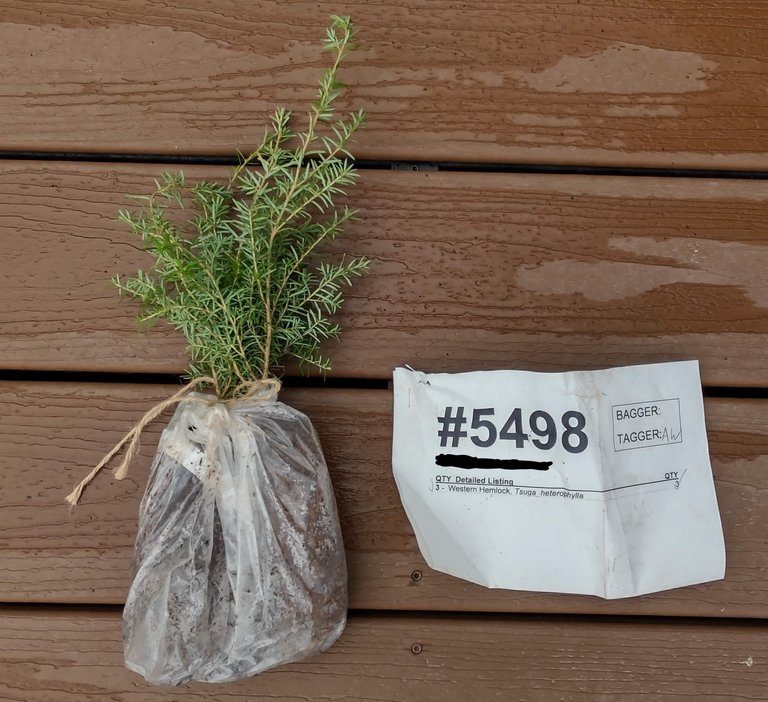
This February, I picked up three new young trees to grow. At $5 per tree, and supporting the local water district (it hosts plant sales, native plant education seminars, and supports wildlife habitats), you can't beat that value.

Western Hemlock
Quite possibly the number one best small needle bearing tree to grow for bonsai in the Pacific Northwest, Western Hemlock has all the ideal traits I value in an artistic native conifer. It has small needles, small pinecones, flexible stems, prolific back-budding, a luminous green color, and a sweet lemony scent.
Yet this delicate tree species continues to elude me. I have grown Hemlock twice before, and I have never had it survive beyond two years in my care.
Learning from experience, I know this tree hates direct sun in Summer. It likes the cool shade when it is hot out, but the roots can also rot if the soil doesn't dry out consistently. So my plan is to increase the drainage capabilities of the soil mix this time, and keep it in the cool shade in Summer.
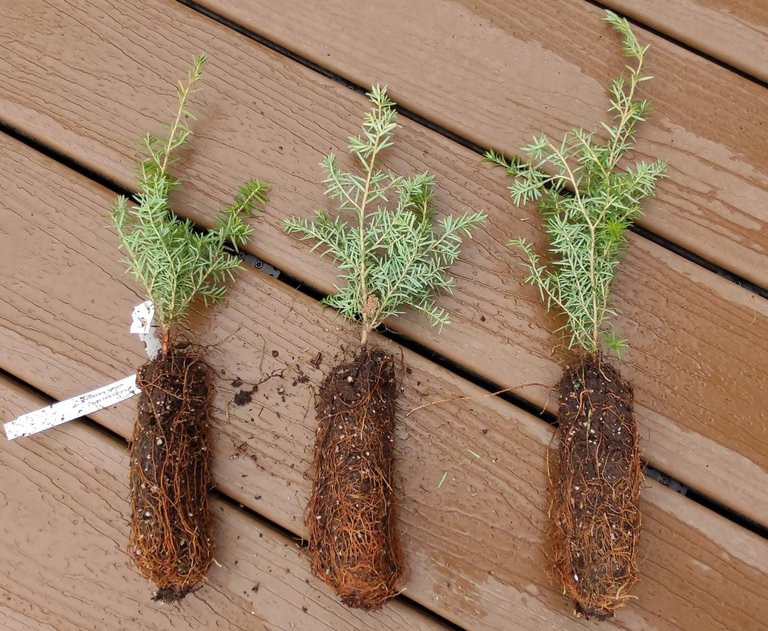
Opening the Package
Here is how the trees looked when removed from their plastic casings.
Initially the branches and stems are all growing perfectly upright. The roots, likewise, are all growing straight down.
Whoever grew these in their tree farm nursery must have had hundreds of trees all growing tightly packed together in long thin soil chambers. At the bottom you can even see little burnt ends on the bottom of the roots where they are practically fused together as the roots mashed together to escape out the drainage hole.
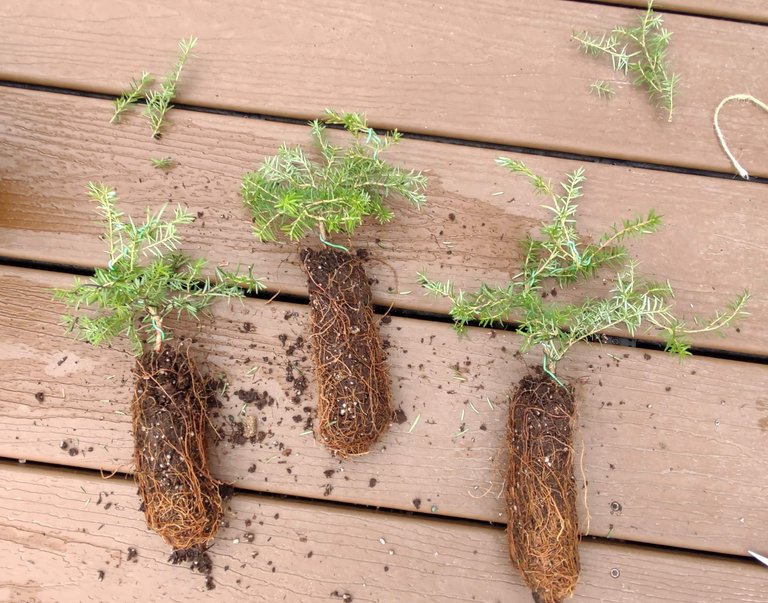
Wiring First
First things first. These trees are very flexible, and tend to spring back into their upright shape no matter which way you bend them.
A couple of excess branches I snipped off as they were too close to the roots or other dominant low branches. I will put the snippings in my cuttings box (sand and moist peat in a clear plastic box with lid), and see if they root in a few months.
So I decided to use a few wires to manipulate the shape of the trees. My thinking was that if I wire them before repotting them, I won't be making a mess with the loose soil as I twist and turn the trunk into various abstract directions. These trees are so tiny, most of them fit in one hand, so I don't want to fuss with the bulky pot getting in my way of reaching through small stems with smaller wires.
About three pieces of wire is enough to spiral the longest stem and four of the longest side branches into more natural lateral movement one would expect in an older tree, which we are emulating in making a bonsai.
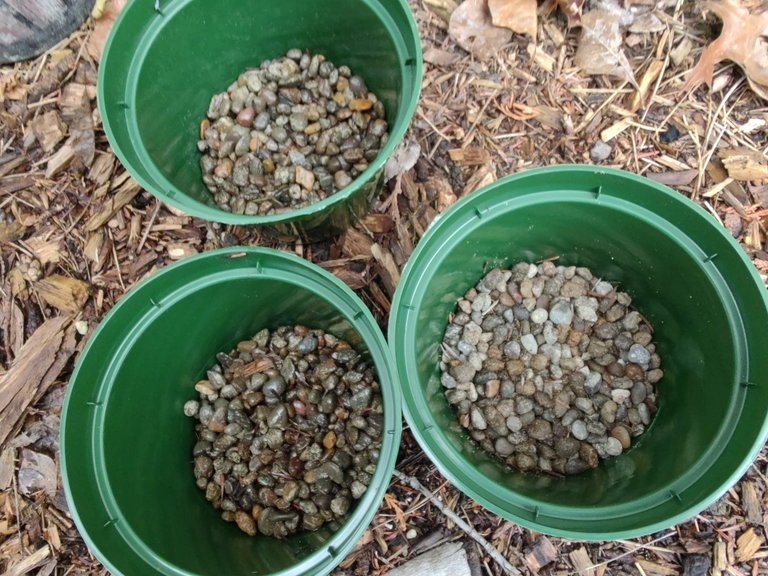
Choosing the Pots and Soil
I found these three green pots for little over a buck a piece at the store, and decided to fill the base with a bunch of extra pebble stones I am trying to get rid off. This will prevent water from puddling, which can drown and rot the roots when we have weeks of rain in Autumn and Spring.
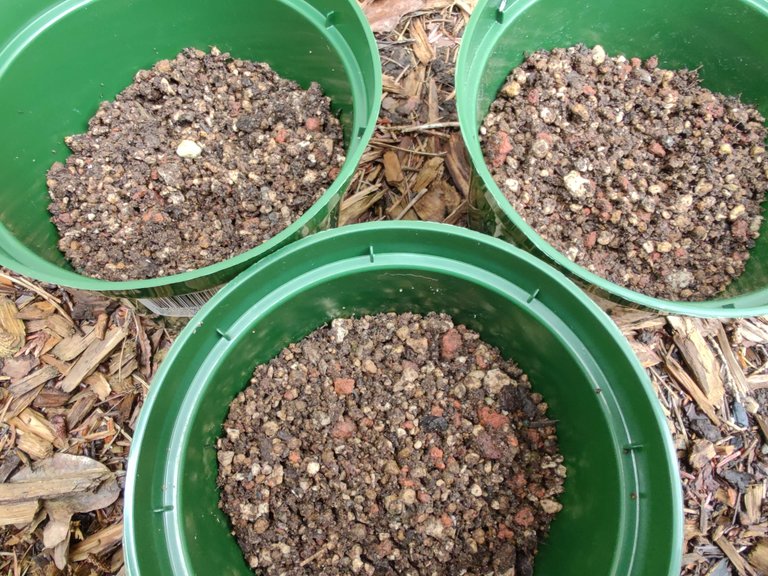
Over the pebbles I mounded up a few scoops of my old recycled bonsai soil. All the woody pine bits are nearly decomposed, but will still retain microscopic bits of moisture, in addition to the air and water that will naturally form around the pumice and lava rock. The akadama (the tan colored bits are volcanic porous clay) in the mix is probably mostly pulverized, but will hopefully still retain some beneficial capillary qualities.
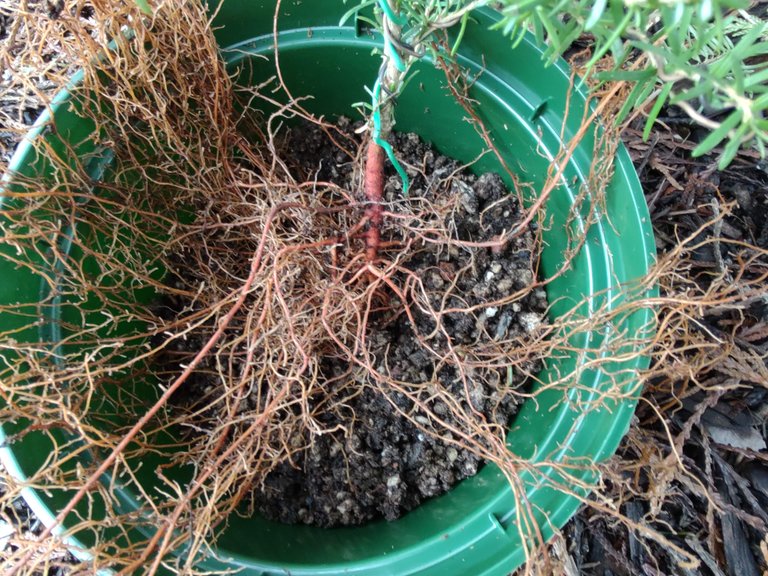
Gordian Knot
The Greeks have a legend about a legendary knot, called the Gordian Knot. It was so tightly bound and difficult a challenge to solve, nobody could untie it. A prophecy declared that whoever could solve the knot would have the whole world at his feet.
When Alexander The Great arrived, after attempting to solve the knot, he eventually gave up, took out his sword and severed the knot. Thus, he fulfilled the prophecy when he later conquered the entire known world. Although some would say he cheated, and that is why he was cursed and died so young in his final campaign.
The roots on my three trees were indeed tangled knots, and I showed no mercy pulling apart all the root bound tendrils from their matted mess of hair.
The perlite and peat soil holding the roots together were mostly serving the purpose of retaining a soft rooting space with a perfect air and moisture ratio for the roots to grow for months or years in a tiny unmonitored seed cell. I showed no mercy knocking out the old soil to fully release the roots from their imprisoned shape.
Eventually I had the roots combed out enough that I could direct them outward from the base of the tree.

Final Steps
Inside the pot with the bonsai soil, I laid out the roots out from the center until they trailed over rim. Dumping more soil over roots, I lightly patted the soil in until the trees could sit comfortably upright on their own.
Next I made a couple risky decisions:
I did not water the freshly planted trees in their new soil.
I did not even trim off the excess roots hanging over the rims of the pots.
To do nothing, this is the hardest way to care for something, but it is sometimes for the best when allowing nature to adapt and grow.
All I did was stick them into my shaded greenhouse where there is plenty of moisture in the air.
Something about the cloudy sky today, and the strong stringlike roots gave me the impression that these roots were strong and amply hydrated and healthy. They were not showing signs of dehydration, and I did not think soaking the roots into soggy wet soil was going help these trees while in dormancy.
A weird part of me wants to experiment and see what happens if I let the roots remain partly exposed inside the moisture rich air of the greenhouse.
Will the moisture held inside the roots get drawn in from the exposed ends to support the more protected area under the soil?
Will the exposed areas continue to root and even thrive in the air of the greenhouse?
Will the ends burn off as the air and sunlight prunes the exposed roots?
Will the air pruned roots force the trees to form new rootlets under the soil, or will the trees stress and shed their needles from a lack of roots capable of absorbing new water?
One thing is for sure, we will find out this March if all goes well, or everything goes to hell.
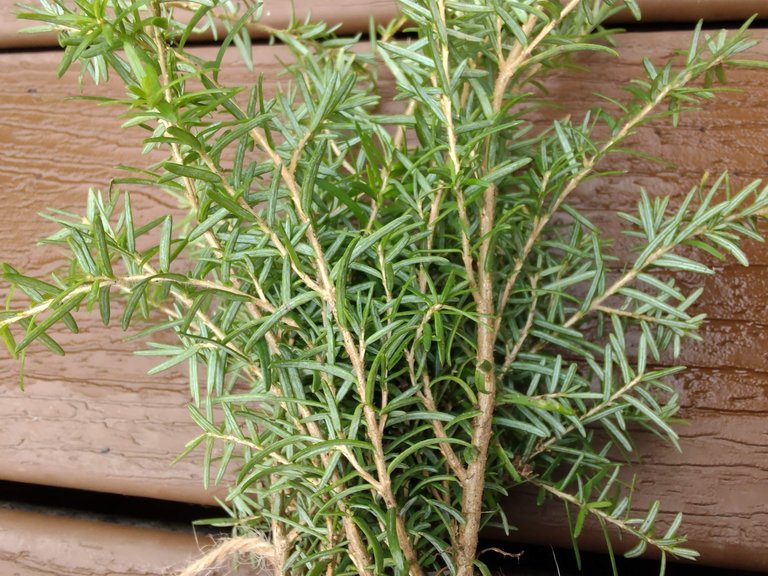
So here is one last look at the healthy foliage of the Western Hemlock.
To me, it greatly resembles Rosemary. The difference is the needles are smaller and thinner, and a bit more yellow green than dark green.
With luck, I will end up with three healthy Hemlock conifers, with a thick canopy of needles fanning out on branches around the trunk. And if they live long enough to form the iconic marble sized pinecones, I think they will be a rare native bonsai species, and the envy of fellow bonsai masters.
Photos in this post are all #originalworks by @creativetruth, unless stated otherwise.


#roots #branches #stem #soil #needles #conifer #green #nativeplants #pinecone #how-to
It will go well. You will conquer the world after untangling the Gordian knot of the hemlock roots 🙂 and will have three lives for doing it on three trees.
We have hemlocks here and they are especially common as you go further north like Maine. Good luck with your bonsai hemlocks.